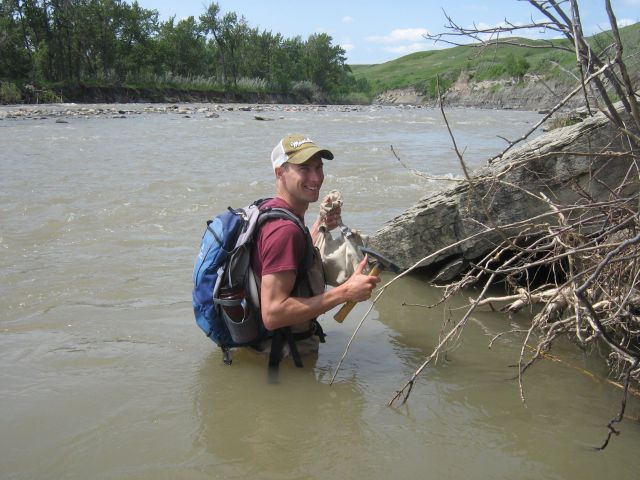
While the Flood of 2013, wreaked havoc on the province, and even today, many communities are just receiving mitigation funding, for the scientific community, it has been revealing.
Royal Tyrrell Museum technicians Joe Sanchez and Ben Borkovic have been prospecting in the wake of the flooding looking for specimens that have been revealed by the high water.
“So far it has turned up some exceptional fossil material that was out in those rivers,” Borkovic tells The Mail.
One of those exceptional finds is the complete fossil of a small dinosaur known as a Leptoceratops, that was revealed in the banks of the Old Man River near Fort Macleod.
“That was probably the specimen that started the whole thing,” he explains. “It really made us and the powers that be realize what was out there and the impact the flood had on palaeontology.”
This fossil was displaced from the wall of the riverbank and spotted by a couple fishing. They contacted the Tyrrell Museum, and staff helped him to collect it.
“Now that it is being prepared it is turning out to be quite exceptional. It’s great to have a skeleton, and know that it wasn’t lost in the river, but on top of that it is turning out to be a pretty spectacular specimen, which will hopefully be out on display here in time.”
Since this find in 2013, they have continued to prospect, and often nature is their best helper.
“Where the largest effect, in terms of our project and in terms of the fossil material turning up, would be in the bends of rivers where the flood was getting higher and pushing harder than any sort of standard spring flow,” he explains. “It really cut the banks back, brought down rock to expose fresh bedrock or clear away a slumped material … it just cut everything clean again.”
The project took more than just cruising the banks of the rivers looking for fossils.
“We narrowed down our focus by looking at areas where we knew the rocks were there, right type and age. We were pouring over maps and satellite images for areas where that should be exposed and try to get to those areas,” he explains. “Once we are on that outcrop, you could tell quickly if it was reburied or slumped over. If it was cleanly exposed, we had to make our way along and inspect every section.
While the flood project itself will be wrapping up over the next year or two. It did however open up new areas to keep an eye on.
“Some of these finds might have brought further field areas to light. Obviously the Drumheller valley and Dinosaur Park are very well known for their fossil material, but now I think there is now some incentive so that the museum will periodically go and inspect these other areas as well."







